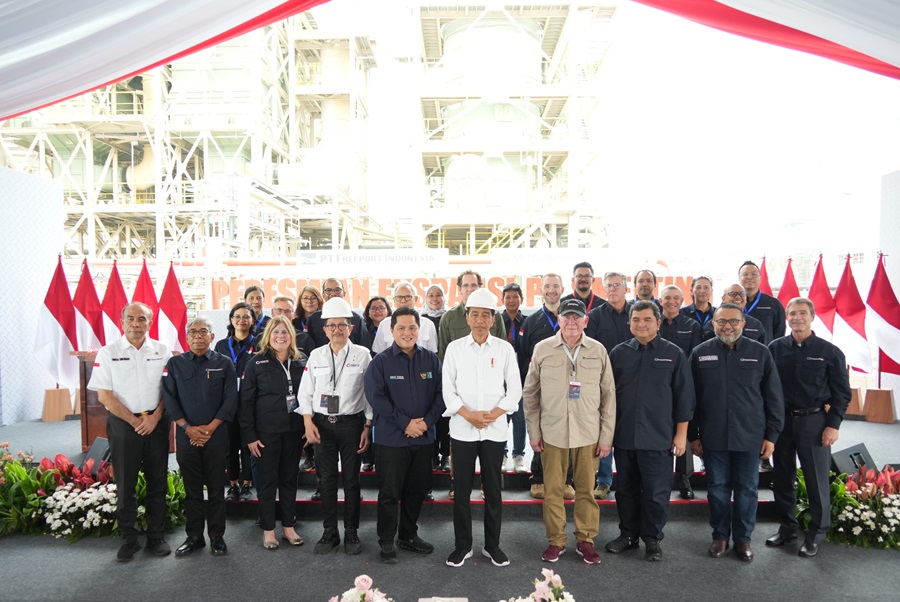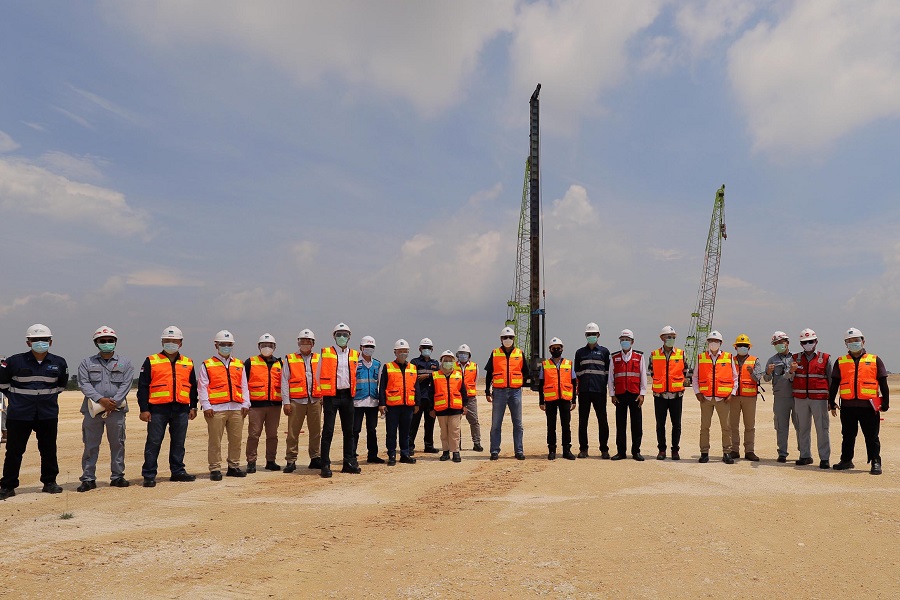Along the Ajkwa river estuary – once stressed by environmental impact – is gradually returning to life. This revival is not by chance – it’s the result of years of consistent effort to care for the surrounding environment and ecosystem.
the surrounding environment and ecosystem.
“Many still assume that PTFI is only focused on mining. But in reality, PTFI holds a long-term commitment to environmental protection and restoration,” said Chris Zimmer, EVP Technical Services. “I’ve witnessed firsthand how our Environmental team works with dedication and responsibility every single day to care for the ecosystems surrounding our operations,” he said.
From Impact to Action
For years, the Ajkwa river up to the estuary experienced significant changes, primarily due to sedimentation from the mining activities carried downstream through this river. The resulting accumulation of sand and minerals altered the river stream and disrupted the local biodiversity. Recognizing the need to act, PT Freeport Indonesia (PTFI) through the Environmental division took action by launching a comprehensive environmental restoration plan.
This commitment began 20 years ago in 2004, when they began to plant mangroves along the coastline. Over time, what began as small patches of mangrove seedlings grew into a mangrove forest now covering approximately 994.39 hectares and formed about 1.100 hectares of mangrove ecosystems. Since 2023, the environmental department has continued their efforts targeting to plant at least 500 hectares of mangroves each year.
Part of the recovery includes reintroducing native aquatic biota like sea bass and mangrove crabs. On May 19, 2025, the first restocking event took place as the Environmental division reintroduced 10.000 sea bass and 500 mangrove crabs at Tipuka island on the Ajkwa estuary to support ecological balance and help revive the food chain.
at Tipuka island on the Ajkwa estuary to support ecological balance and help revive the food chain.
“A survey conducted in collaboration with University of Papua (UNIPA) shows that barramundi fish and mangrove crabs are among the most valuable commodities for coastal communities,” explained Gesang Setyadi, VP Environmental Division. “Therefore, preserving aquatic biodiversity is a key priority for PTFI, as these ecosystems also support the local economy.”
Expertise in Action, Guided by Science
What’s made the biggest difference is the shared effort behind this work. It is a collective achievement of dedication from environmental scientists, marine and mangrove experts, water quality professionals, the local community living along the coastline and even local government partners. Everyone played vital roles in designing and implementing the restoration efforts. Their combined knowledge ensures that every step is grounded in science and aligned with sustainability principles.
Robust monitoring is at the heart of the program. The data is consistently collected and analyzed on aquatic biodiversity, mangrove development, fisheries health, and oceanographic dynamic. This continuous cycle of assessment and action keeps the initiative adaptive, transparent, and measurable.
Beyond data and technical expertise, the true strength of this work lies in its shared commitment. Employees have contributed to the estuary’s progress. Their dedication reflects a culture where environmental responsibility is not a task, but a value lived every day.
Looking Ahead: Restoring More Than Land
While results have already begun to show – with healthier waters, the return of marine life, and increasing biodiversity – the journey continues. PTFI has set its sights on a long-term target: restoring up to 10.000 hectares of coastline with mangrove by 2032.
This isn’t just about environmental restoration – it’s about building a legacy of care. A commitment to leave the land stronger for future generations, and a living example of how thoughtful mining practices and environmental restoration can thrive side by side.
Because when nature begins to recover, so does trust. And when the coastline thrives, so do we all. (imarischa)
.
Back To List













